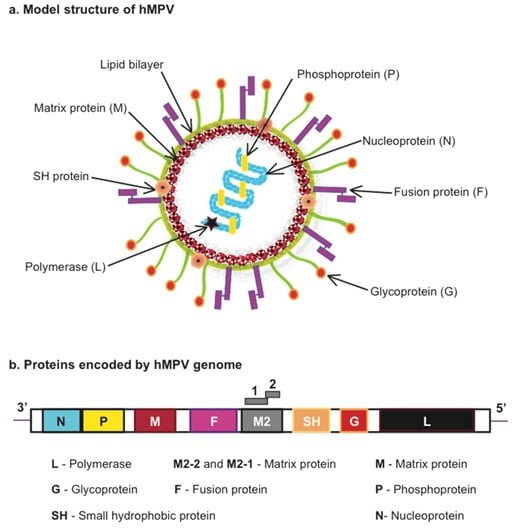Understanding Human Metapneumovirus
Human Metapneumovirus (HMPV) is a respiratory virus that can cause upper and lower respiratory tract infections, primarily in children, the elderly, and people with weakened immune systems. The virus was first identified in the Netherlands in 2001 and has since been identified worldwide. HMPV is a significant cause of respiratory illnesses, including bronchiolitis, pneumonia, and asthma exacerbations. In this article, we will discuss what HMPV is, how it spreads, and the symptoms, diagnosis, and treatment options available for the virus.
What is Human Metapneumovirus, and how does it spread?
HMPV is a negative-sense single-stranded RNA virus that belongs to the Paramyxoviridae family. The virus is highly contagious and spreads through respiratory droplets when an infected person coughs or sneezes. The virus can also spread when a person touches a surface contaminated with the virus and then touches their nose, mouth or eyes. The virus can survive on surfaces for up to 7 hours, making it easy for people to contract the illness if they come into contact with contaminated surfaces.
HMPV is most commonly spread in the winter and spring months, much like the flu virus. Outbreaks of HMPV have been reported in hospitals, schools, and long-term care facilities. Children in daycare or school settings are more likely to contract HMPV as they are often in close contact with other children who may be infected.
Symptoms, Diagnosis, and Treatment of Human Metapneumovirus
Symptoms of HMPV typically start to appear 4 to 6 days after exposure to the virus. The symptoms can range from mild to severe and include runny or stuffy nose, cough, fever, wheezing, and difficulty breathing. In severe cases, HMPV can lead to pneumonia or bronchiolitis, especially in infants and young children.
Diagnosis of HMPV is made through laboratory testing of respiratory secretions, such as nasal swabs, throat swabs, or sputum cultures. Rapid diagnostic tests are available but may not be as sensitive as laboratory-based tests. HMPV can be easily mistaken for other respiratory viruses, such as the flu, so it is crucial to get a proper diagnosis from a healthcare professional.
There is currently no specific treatment for HMPV infections, and antibiotics are not effective against viral infections. Treatment is focused on relieving symptoms, such as using fever-reducing medications, drinking plenty of fluids, and using a humidifier to ease respiratory symptoms. In severe cases, hospitalization may be required to provide oxygen and other supportive care.
Prevention of HMPV is similar to preventing other respiratory viruses. Frequent hand washing, covering your mouth and nose when you cough or sneeze, and avoiding close contact with sick individuals are effective preventative measures. There is currently no vaccine available for HMPV, but research is ongoing to develop one.
Understanding Human Metapneumovirus
In summary, Human Metapneumovirus is a contagious respiratory virus that can cause severe respiratory infections, especially in young children and the elderly. The virus spreads through respiratory droplets or touching contaminated surfaces. Symptoms of HMPV are similar to the flu and can be severe in some cases. There is currently no specific treatment for HMPV, and prevention is focused on avoiding close contact with sick individuals and practicing good hand hygiene. If you suspect you or your child has HMPV, seek medical attention to get a proper diagnosis and treatment plan.
Image credit
Nagarjuna R. Cheemarla and Antonieta Guerrero-Plata, CC BY 4.0, via Wikimedia Commons

